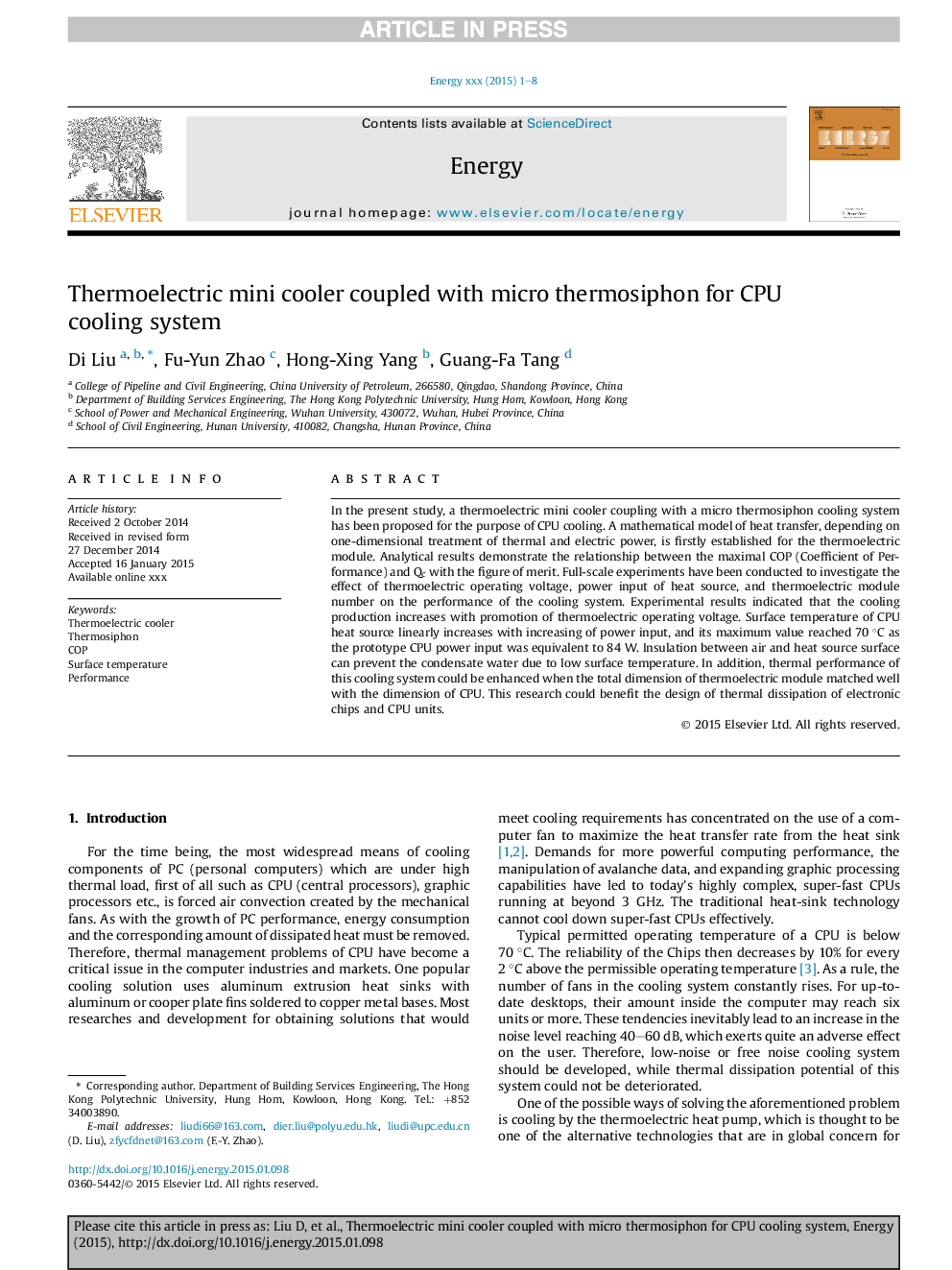| Article ID | Journal | Published Year | Pages | File Type |
|---|---|---|---|---|
| 8074719 | Energy | 2015 | 8 Pages |
Abstract
In the present study, a thermoelectric mini cooler coupling with a micro thermosiphon cooling system has been proposed for the purpose of CPU cooling. A mathematical model of heat transfer, depending on one-dimensional treatment of thermal and electric power, is firstly established for the thermoelectric module. Analytical results demonstrate the relationship between the maximal COP (Coefficient of Performance) and Qc with the figure of merit. Full-scale experiments have been conducted to investigate the effect of thermoelectric operating voltage, power input of heat source, and thermoelectric module number on the performance of the cooling system. Experimental results indicated that the cooling production increases with promotion of thermoelectric operating voltage. Surface temperature of CPU heat source linearly increases with increasing of power input, and its maximum value reached 70 °C as the prototype CPU power input was equivalent to 84 W. Insulation between air and heat source surface can prevent the condensate water due to low surface temperature. In addition, thermal performance of this cooling system could be enhanced when the total dimension of thermoelectric module matched well with the dimension of CPU. This research could benefit the design of thermal dissipation of electronic chips and CPU units.
Related Topics
Physical Sciences and Engineering
Energy
Energy (General)
Authors
Di Liu, Fu-Yun Zhao, Hong-Xing Yang, Guang-Fa Tang,
